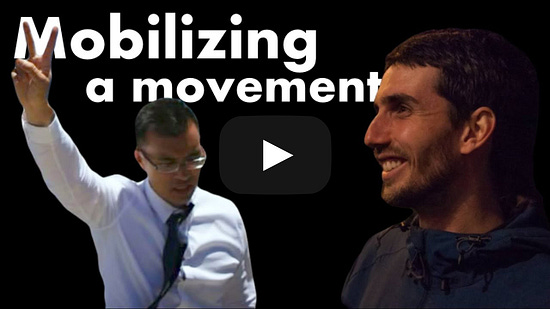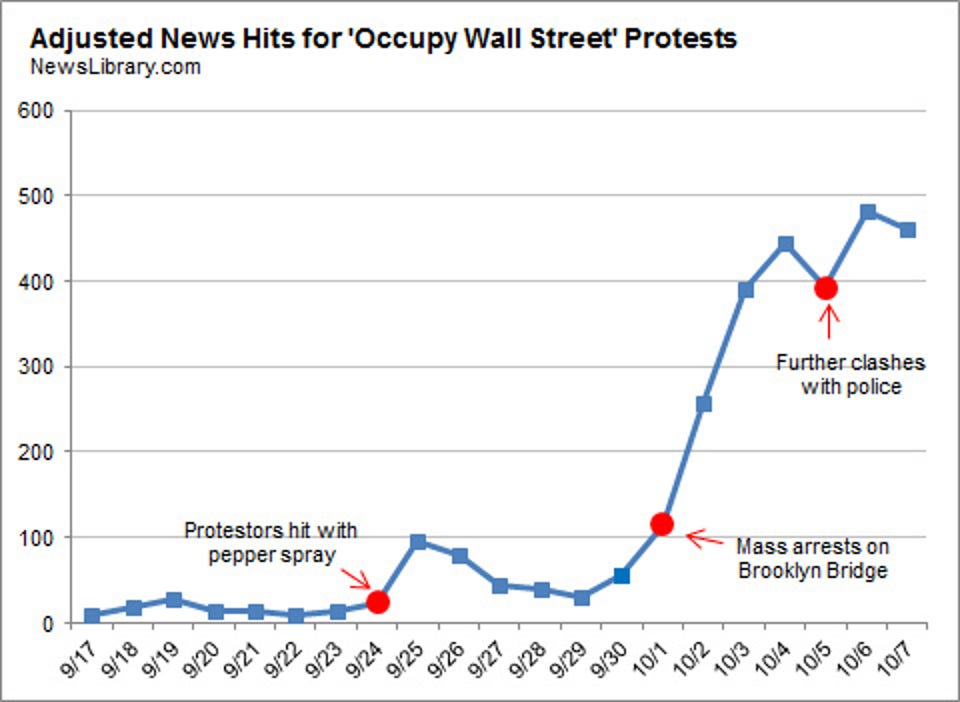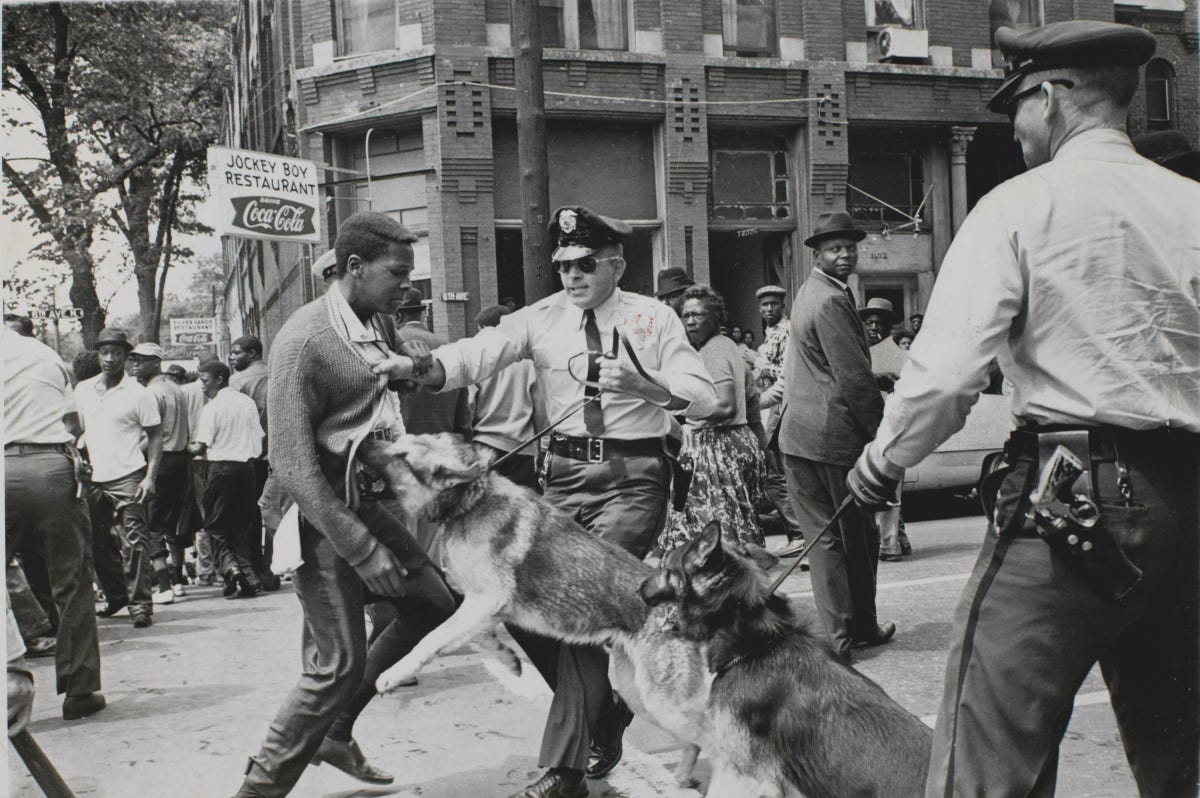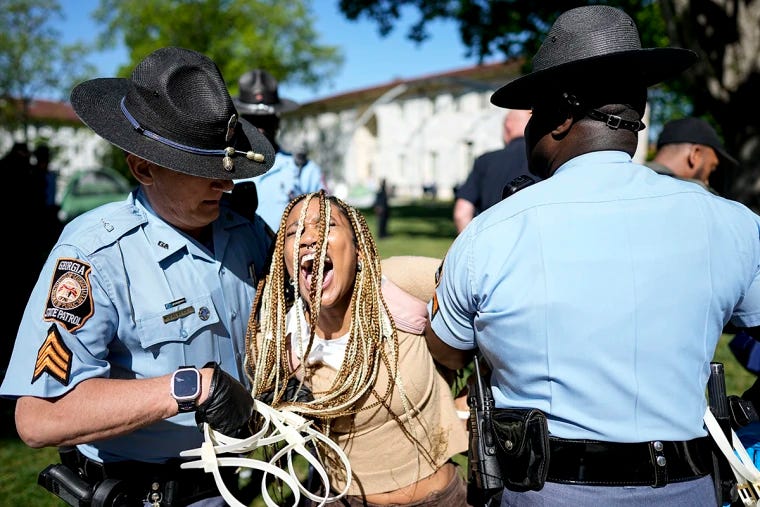|
How Mass Arrests Drive Social Change
From #BlackLivesMatter to #FreePalestine, movements can explode when their supporters are willing to risk arrest.
This is the chart that transformed the way I think about protests.
During the Occupy Wall Street movement of 2011, data scientist Nate Silver published this in The New York Times. It showed how clashes with the authorities, leading to mass arrests, were driving media coverage to remarkable heights. For years, I had been trying and failing to get anyone — even a student newspaper — to pay attention to animal rights. And Silver’s chart seemed to offer a simple solution:
To seize national attention, you have to risk arrest.
And this solution goes beyond Occupy Wall Street. The strategy of mass arrest has been crucial to every social movement I’ve researched since seeing Silver’s chart. When you look at the Big Five social movements of the last century — Women’s Rights, Civil Rights, Anti-War, Environmentalism, and Gay Rights — each was propelled in part by mass arrests.
The reason is that mass arrests communicate something important: we are committed, and we won’t give up. This commitment, in turn, inspires public attention and support. For example, when Dr. Martin Luther King, Jr. defied a court order by marching and facing arrest with hundreds of others in Birmingham in 1963, it led to national headlines (including a front page story in The New York Times) and won sympathy from unexpected people (such as a racist Southern Senator named Lyndon B. Johnson, who went on to sign the Civil Rights Act).
Imagine if King’s famous “Letter from a Birmingham Jail” were instead a “Letter from a Nonprofit Office.” Not quite the same impact, right? This is the power of risking arrest.
Recent history has given even more weight to the argument for mass arrest. The Standing Rock protests of 2016, which attempted to block the construction of the Dakota Access Pipeline, led to 800+ arrested — and a surging movement to stop climate change. #BlackLivesMatter protests in 2020 led to 14,000 arrests nationwide — and a global reckoning on racial justice. And, most recently, 112 activists at Columbia University were arrested on April 30 to protest the war in Gaza — and triggered a wave of news coverage about the movement to divest from Israel.
I used Nate Silver’s method from 2011 to assess the impact of arrests on media coverage of Gaza protests in 2024. And the results were astounding. From April 15 to April 29, a Google News search found 27,300 hits for the terms “Gaza divest.” That jumped to 109,000 hits in the two weeks starting on April 30, immediately after the arrests at Columbia. That is a fourfold increase. And it is not just the quantity but the quality of the coverage that changed. Gaza protests have been on the front page of virtually every newspaper in America since April 30. The movement to divest seized the national agenda, and it happened in part because a mere 112 people chose to risk arrest. (Interestingly, one of those people is a prominent animal rights activist, James “Cody” Carlson, who used to work undercover for Mercy for Animals.)
In short, mass arrest works.
—
It’s for that reason that I was excited to speak to the co-founder of Animal Rising, Dan Kidby, on my new YouTube show and podcast. Animal Rising (formerly, Animal Rebellion) was born from the Extinction Rebellion movement that changed global discourse on climate in 2019. And Animal Rising (AR) has inspired hundreds of people to risk arrest in meat distribution center blockades, race track disruptions, and (increasingly) open rescues in defense of animal rights. Indeed, like Extinction Rebellion, which explicitly used arrest as a tactic, AR is inviting confrontation with the authorities as a way to seize the agenda.
And they are succeeding. Last year, they were on the front page of newspapers in the UK a stunning 12 times. I wanted to talk to Dan to understand how it happened.

There are a lot of lessons from this conversation, and from Animal Rising’s successes. But here are three of the most important ones.
Maintain nonviolence. The authorities will try to smear a growing movement for mass arrest as not just disruptive but dangerous. The result is that, like the SHAC campaign in the 2000s, a movement’s momentum can be slowed or crushed by increasingly severe punishments. Nonviolence is the solution to this problem. When the government attempts to punish nonviolent activists, it backfires by making martyrs for the cause. Just as important, nonviolent activists maintain control over the narrative because the government’s attempts to smear the movement fall flat. How can anyone argue that grandmothers holding flowers are dangerous? For this reason, AR has embedded nonviolence into its DNA. “Love,” even for the group’s adversaries such as farmers, is one of its core values. And its core training, which every AR activist must go through, is a training on nonviolence. This has allowed AR to sustain its mobilization in the face of repression efforts.
Avoid purity politics - and the people caught up in it. It is particularly important, when activists are taking big risks, that a movement maintain unity and cooperation. No one is going to get arrested if they think the person standing next to them might stab them in the back. Purity politics — i.e., a culture where those with “wrong” beliefs are condemned or even canceled — destroys a movement’s ability to cooperate. AR has done an extraordinary job of defending against this by intervening swiftly — and, when necessary, removing people — when purity politics rears its head. We saw this firsthand at a recent conference in Washington, DC. When a video was played in which an activist condemned others in the movement (apparently including me) as failing a social justice litmus test, it was Animal Rising’s Ben Newman who spoke most swiftly and decisively against purity politics.¹ That culture is part of the reason Animal Rising has had so much success in mobilizing people to take big risks.
Forget security culture; be open. I was astonished to hear that, when AR was organizing a disruption of the most-watched horse racing event in the world, the Grand National, they stated their plans openly to the public. (If you don’t believe me, check out this interview of Animal Rising’s Orla Coghlan on Good Morning Britain days before their protest.)
This openness is a violation of one of the most ironclad rules of direct action: maintain the security of your operation. If information gets in the wrong hands, after all, it can be used against you. Dan and others at AR, however, have not just ignored but actively challenged this rule. They argue that focusing on security deters a movement’s ability to build the numbers — and the trust — to scale up direct action campaigns. And the more I’ve reflected on this, the more I’m convinced they are correct. You can’t scale up if you don’t build trust. And you can’t build trust if you’re always hiding things from people you’re working with. Perhaps even more important, however, is that a culture of security misses the point when getting prosecuted is part of the strategy. Who cares if the authorities find out what you’re up to when you want them to arrest you anyways?
—
Mass arrest is not the only strategy for achieving change, but it’s a crucial one. And, historically, it is a strategy that has been almost entirely absent for animal rights. The successes of Animal Rising, and Direct Action Everywhere, over the last 10 years show the power of this strategy when we tap into it. Both groups have received national media attention repeatedly — and on a shoestring budget — partly because of their willingness to risk arrest.
But what’s been done so far is not enough. To truly seize the national and global agenda, we need a movement, not of 50 people arrested, but 500 or 5,000. That can only be done if we explain to many more people why taking risks is important, and show them how they can be part of the movement no matter their personal risk tolerance. That’s part of the reason why I started this Substack, and why we’re launching a YouTube show (and associated podcast): to establish that vision and strategy. And to create simple ways to plug thousands (including you) into that vision!
I’ll have much more to say about that in newsletters and podcasts to come. But let me conclude with what I began this newsletter with:
If we want change — if you want change — we need a movement that’s willing to risk arrest. So let’s get out there, and be brave.
What’s up this week?
I’ve been delayed in publishing newsletters, and I’m sorry! There are a number of reasons: the Animals and Vegan Advocacy Summit in mid-May; draft newsletters that have been the subject of a lot of internal disagreement (and that I therefore declined to publish — more on that soon); and, to be honest, my own lack of focus and productivity. But I am going to make a public commitment. Two newsletters a week, which will often be shorter and focused on developing ideas that we discuss on the new YouTube show. I also plan to release some extra content for paid subscribers, including a video of a class I guest taught at Vermont Law School last weekend.
The Ridglan Special Prosecutor hearing is just a month away on July 10 — and the company just made a last-ditch effort to kill or “seal” our case. The company filed a writ petition in the Court of Appeals in Wisconsin this week, arguing that because it was as a “victim” of a crime, our case must stop — or alternatively be sealed from public view. They also engage in exactly the sort of fear mongering that I describe in the newsletter above, by claiming (with no evidence) that the company has been subject to “death threats.” I’ll have more to say about this, and the broader movement to stop the torture of dogs in labs, in the weeks to come. But here is their petition for those who are curious. It’s a strange new twist in the fight to save the Ridglan dogs.
Separately, PETA released a video featuring Julie, the blind beagle we rescued from Ridglan Farms. PETA has been immensely supportive of our efforts to rescue animals over the last 10 years, in no small part because of the leadership of PETA co-founder Ingrid Newkirk in defending direct action. (I’ve written previously about the important lessons Ingrid has taught me over the years.) Check out PETA’s video here:
We are planning a nonviolence training in August in San Francisco! Given all the talk about nonviolence in this newsletter, it’s probably time to put that value into action. I’ve been in touch with one of the best nonviolence trainers, who was himself trained by a leader in the Civil Rights movement, about ensuring nonviolence training is a crucial part of animal rights in the local scene. If you’re interested in joining — or, better yet, helping us organize it — shoot us an email at [email protected]. If you’re interested in organizing a training locally, also let us know. We want to build template resources that will help you, as well.
Do animals know they’re going to die? I was in tears after reading this animated essay published in The New York Times. Check it out. (Use a different browser if you hit a paywall. It’s worth it.) The piece reminds me: the animals of this Earth are not just our neighbors and friends but our teachers. Rest in peace, Mango and Moby, you will live in your family’s heart forever — and now in my heart, too.
That’s all for the week!
Ben is also, incidentally, the first person in AR to spend time in jail; when I met him in DC, he seemed impressively unfazed by the experience.
Thank you for reading The Simple Heart! To help us reach more people, become a donor today.




